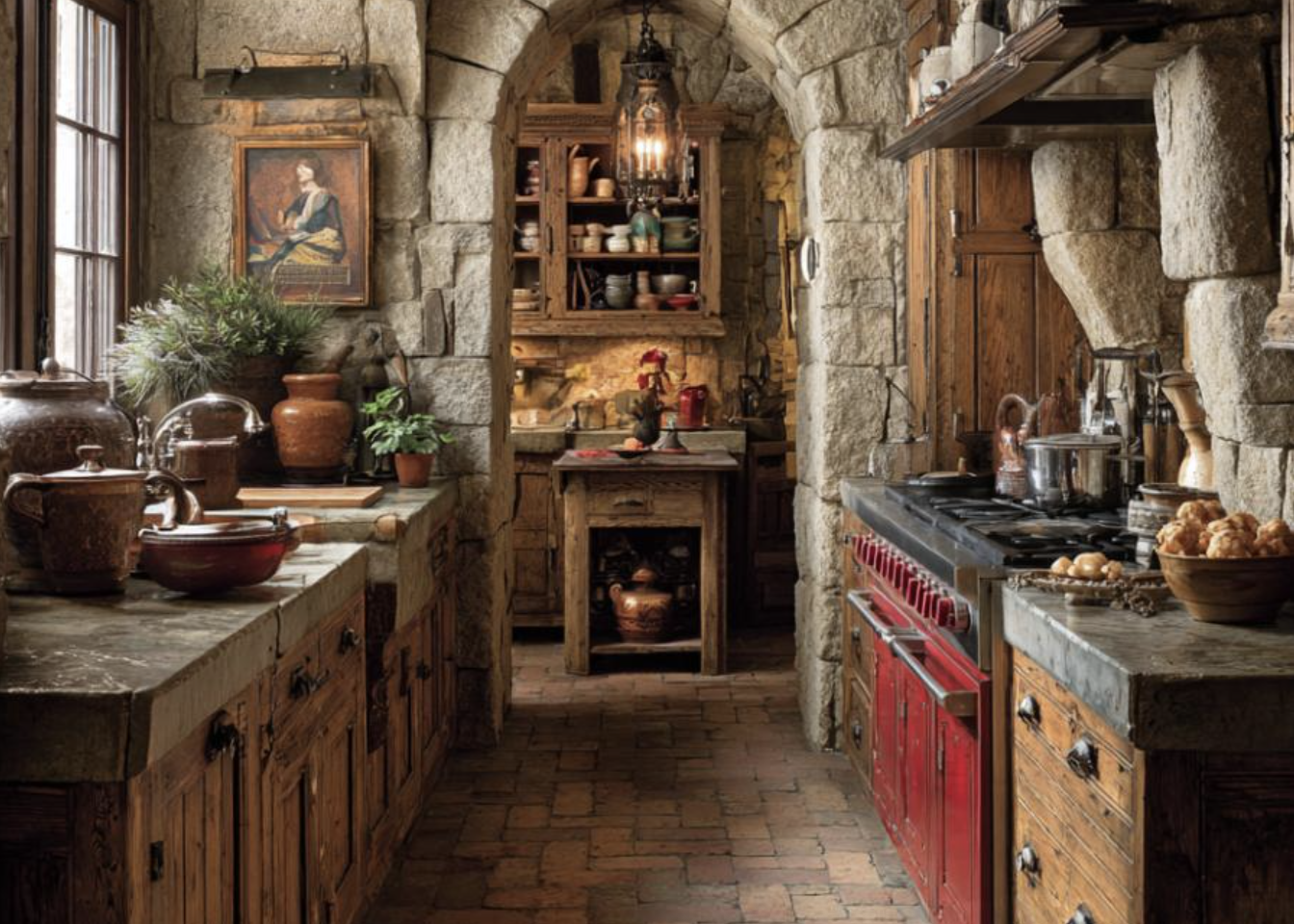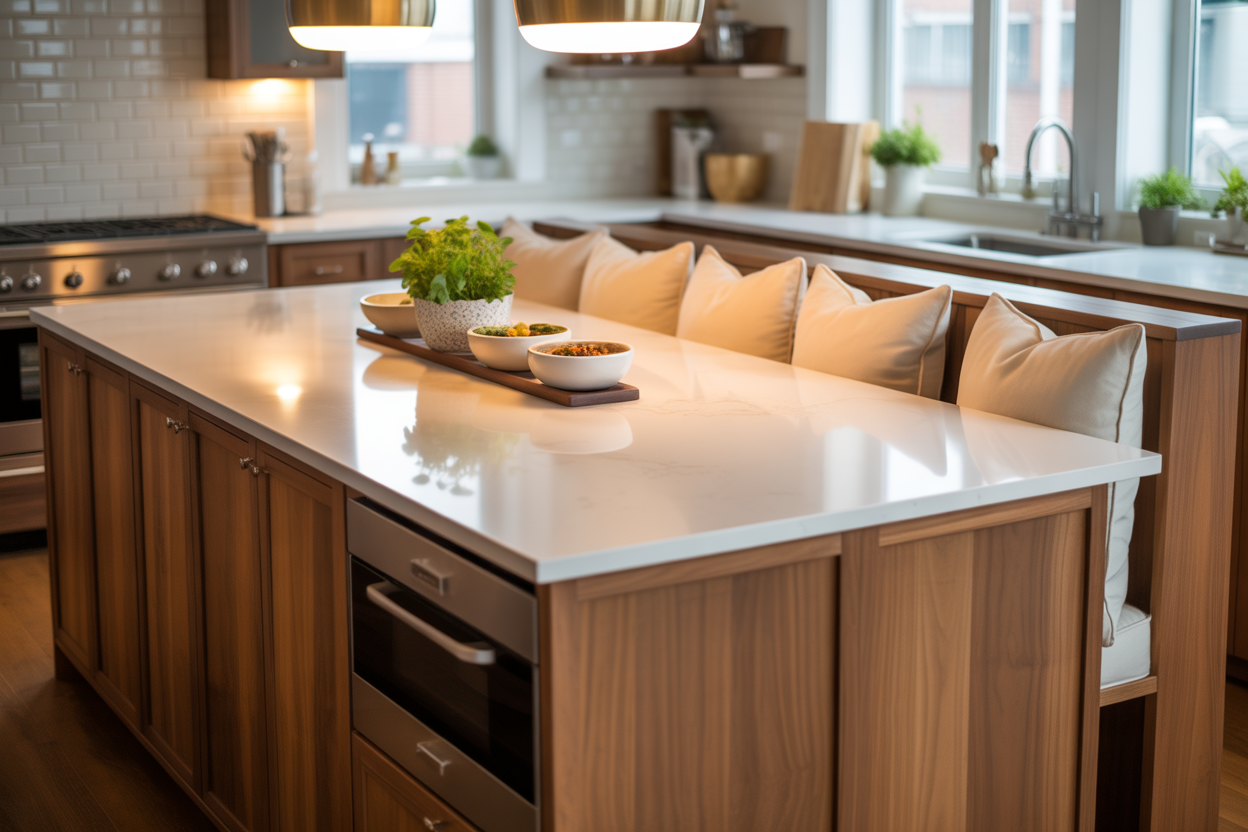
The traditional dining table has met its match in the built-in banquette kitchen island—a spatial innovation that collapses the boundary between cooking and gathering. This hybrid solution addresses our psychological need for togetherness while maximizing square footage, creating what I call “conversational cooking zones” where meal preparation becomes the entertainment. These 18 designs prove that the most compelling interiors emerge when we question furniture conventions and embrace architectural seating solutions that transform kitchens into true living spaces.
In order to come up with the very specific design ideas, we create most designs with the assistance of state-of-the-art AI interior design software.
L-Shaped Banquette Kitchen Island with Corner Seating

The L-shaped configuration exploits corner real estate that typically becomes dead space, creating an intimate enclosure that seats six to eight people comfortably. This design psychologically anchors the kitchen as the home’s social nucleus, with the perpendicular seating arrangement facilitating both face-to-face conversation and side-by-side interaction. The corner placement offers a protective alcove effect that appeals to our innate preference for sheltered gathering spots, while the extended countertop provides ample workspace for collaborative cooking experiences.
Curved Banquette Kitchen Island for Open Floor Plans
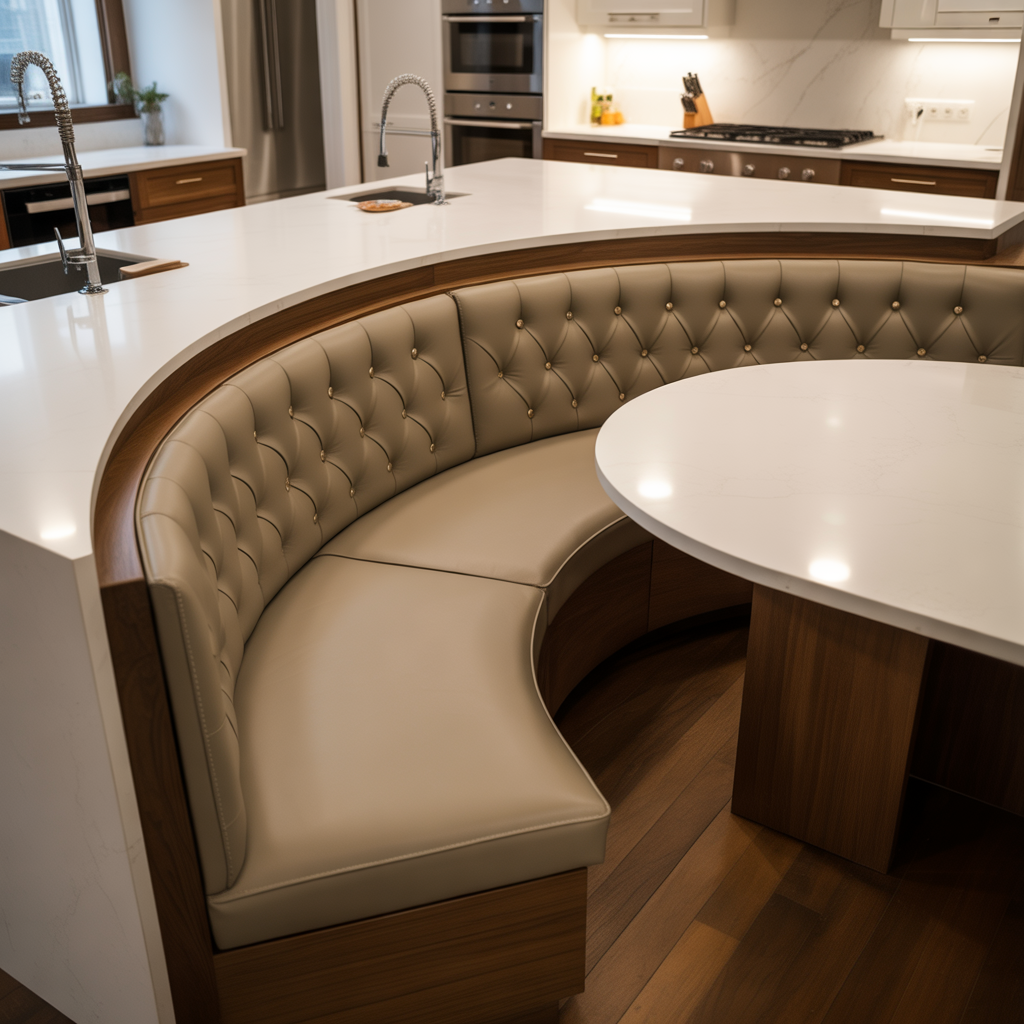
Organic curves soften the hard edges of contemporary open-concept living, guiding circulation patterns while defining zones without visual barriers. The sweeping arc of a curved banquette creates what I term “flow architecture”—design that moves the eye and body seamlessly through space. This configuration particularly benefits great rooms where kitchen, dining, and living areas merge, providing definition without division. The rounded form also maximizes seating capacity while maintaining sightlines throughout the space, satisfying our desire for both connection and spatial awareness.
Compact Banquette Kitchen Island for Galley Kitchens

In narrow galley layouts, a streamlined banquette island proves that spatial constraints inspire innovation rather than compromise. This efficient design typically features one-sided seating with a slim profile that maintains workflow clearance while providing dining for four. The built-in nature eliminates chair backs that would otherwise protrude into walkways, creating a cleaner circulation path. This solution demonstrates how intelligent space planning can introduce multifunctionality even in the most challenging footprints, transforming limitations into distinctive design opportunities.
Two-Tier Banquette Kitchen Island with Elevated Counter
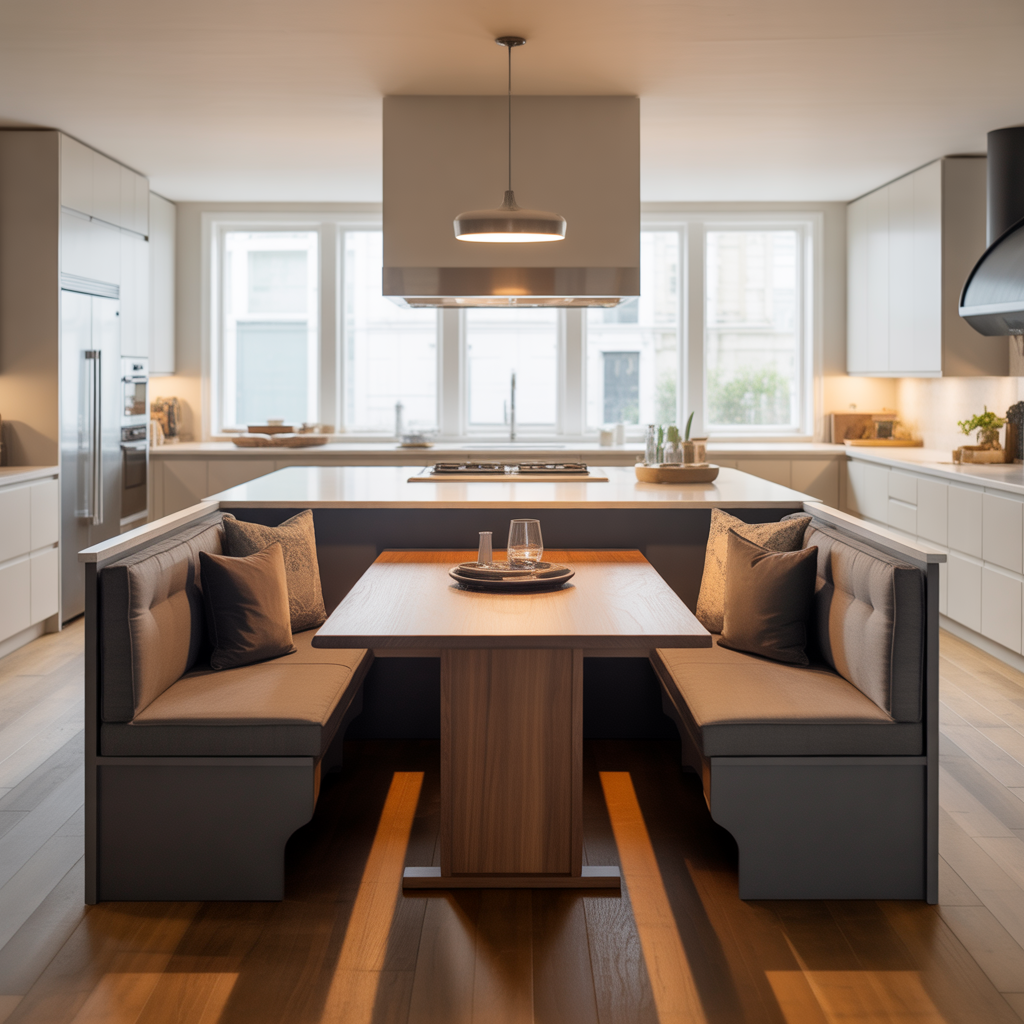
The elevated counter creates a psychological threshold between cooking prep and dining, allowing hosts to engage with guests while maintaining a subtle workspace boundary. This tiered approach offers practical advantages—concealing meal preparation clutter behind the raised section while providing comfortable dining at standard table height. The dual-level design satisfies our need for both transparency and privacy, enabling cooks to maintain social connection without exposing every aspect of the culinary process. It’s architectural diplomacy at its finest.
Minimalist Banquette Kitchen Island with Storage Drawers
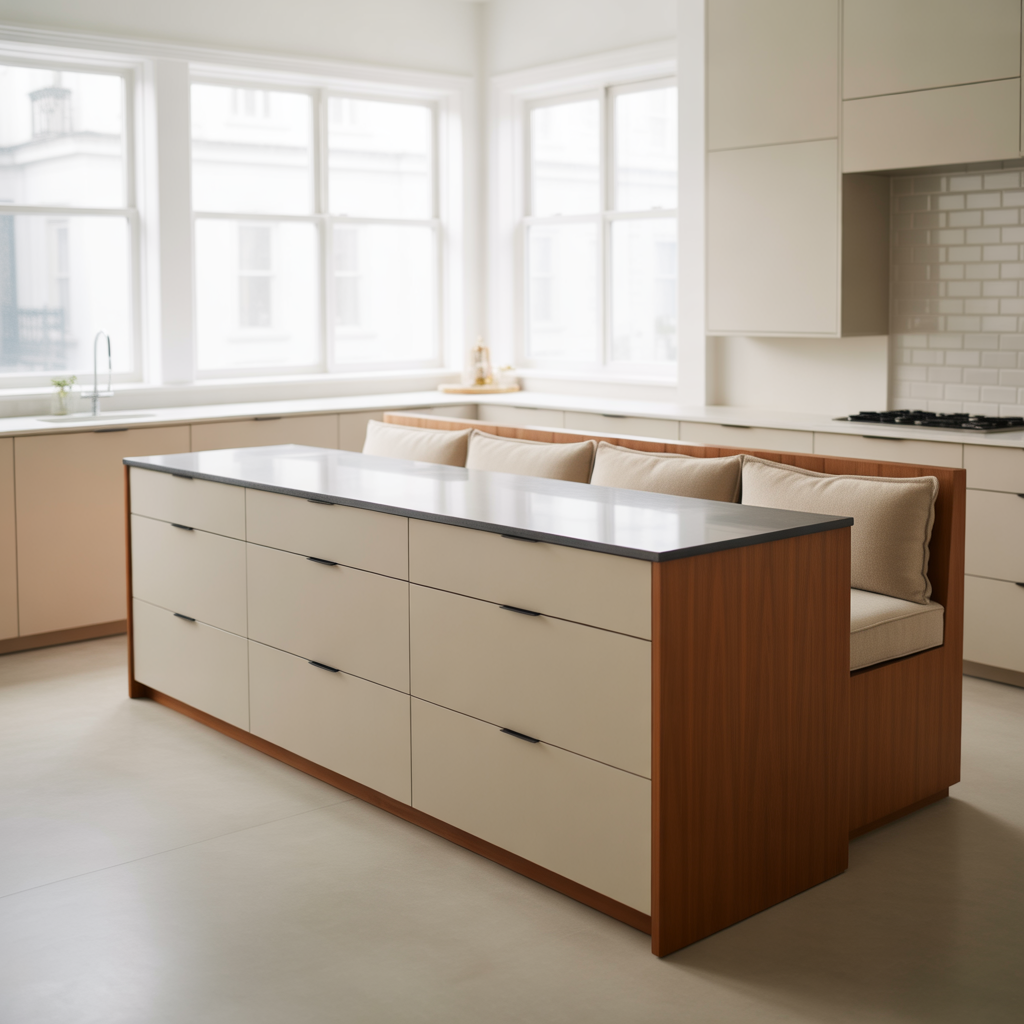
Clean-lined minimalism achieves its highest purpose when paired with invisible functionality, and drawer-integrated banquettes exemplify this principle beautifully. Beneath streamlined cushions, deep drawers house table linens, servingware, and seasonal items, eliminating visual clutter while maximizing utility. This design speaks to our contemporary desire for serene environments that don’t sacrifice practicality. The unadorned surfaces and concealed storage create what I call “calm functionality”—spaces that appear effortlessly simple while working exceptionally hard behind the scenes.
Rustic Farmhouse Banquette Kitchen Island with Reclaimed Wood

Reclaimed wood brings temporal depth to kitchen spaces, each weathered plank telling stories that new materials simply cannot convey. The farmhouse banquette island taps into our collective nostalgia for gathering tables where generations shared meals, translating that emotional resonance into built-in architecture. Chunky beams, visible joinery, and aged patinas create tactile richness that invites touch and conversation. This design proves particularly powerful in newer homes, where historic materials introduce authentic character that grounds contemporary living in comforting tradition.
Modern Banquette Kitchen Island with Waterfall Edge
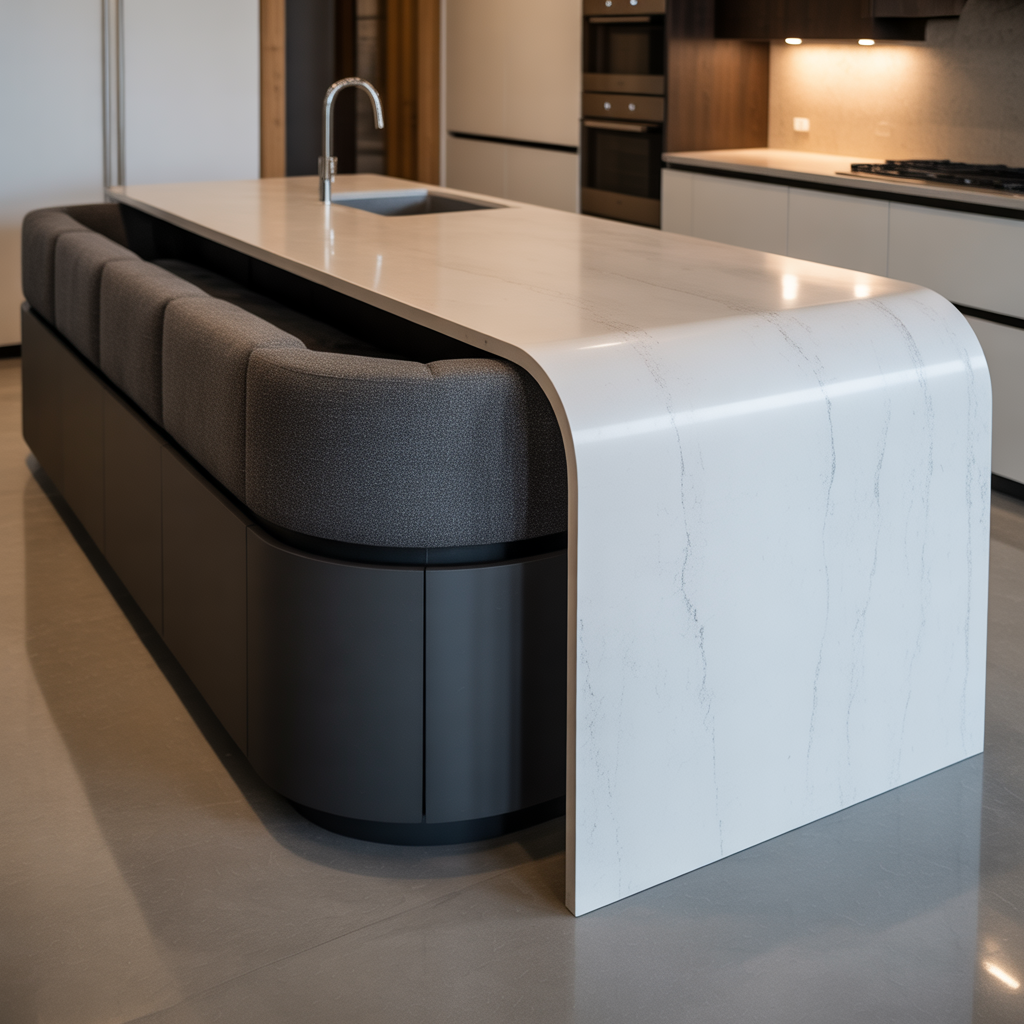
The continuous waterfall edge represents material confidence—a single slab cascading from horizontal to vertical plane in sculptural fluidity. This detail transforms the kitchen island from furniture into architecture, creating a monolithic presence that anchors the space with quiet authority. The seamless material flow appeals to our appreciation for craftsmanship and precision, while the clean geometry satisfies contemporary aesthetic sensibilities. When paired with integrated banquette seating, the waterfall edge emphasizes the island as a singular, intentional composition rather than assembled components.
Built-In Banquette Kitchen Island with Booth-Style Seating

Booth seating imports the convivial atmosphere of diners and bistros into residential kitchens, creating what I call “restaurant domesticity.” The high-backed design provides acoustic absorption and visual privacy, carving out an intimate dining zone within larger open spaces. This configuration particularly appeals to families, as it naturally contains children while facilitating conversation and supervision. The nostalgic reference to classic American eateries adds playful character while delivering genuinely comfortable seating that encourages lingering long after meals conclude.
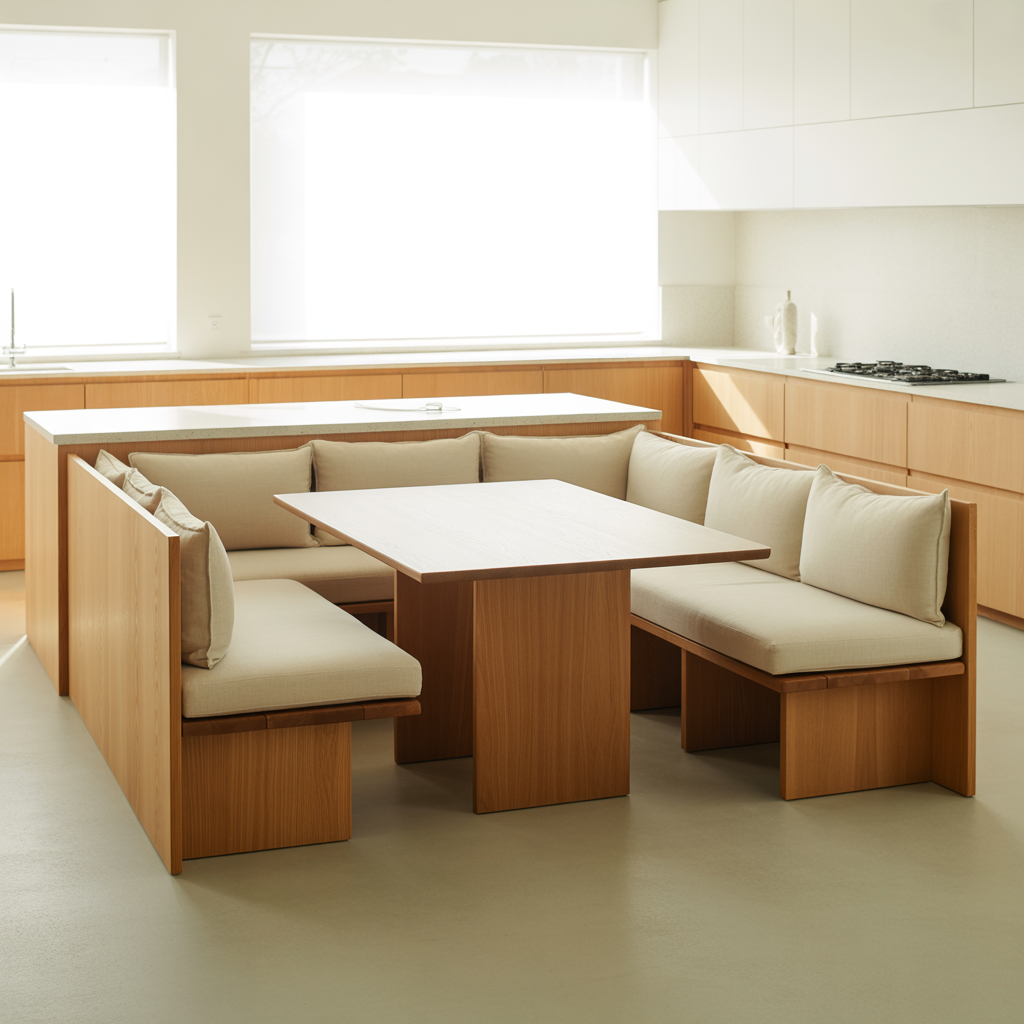
Pale woods and understated forms characterize Scandinavian design’s gentle approach to communal spaces, prioritizing warmth over showiness. Light oak or ash cabinetry paired with simple cushions in natural linen creates an approachable elegance that feels welcoming rather than precious. This aesthetic acknowledges that kitchens should feel inhabited and livable, not staged for photography. The restrained palette and organic materials promote what Danish designers call “hygge”—that ineffable quality of cozy contentment that transforms everyday moments into cherished rituals.
Industrial Banquette Kitchen Island with Metal Accents

Exposed metal brackets, steel-edged countertops, and riveted details celebrate structural honesty while introducing masculine edge to kitchen design. The industrial banquette island embraces imperfection and utility as aesthetic virtues, appealing to those who appreciate authenticity over refinement. Metal accents provide visual weight and textural contrast against softer upholstered seating, creating dynamic tension that energizes the space. This approach particularly suits loft conversions and urban homes where the architecture already speaks an industrial vocabulary that interior elements can amplify.
Banquette Kitchen Island with Tufted Upholstered Seating
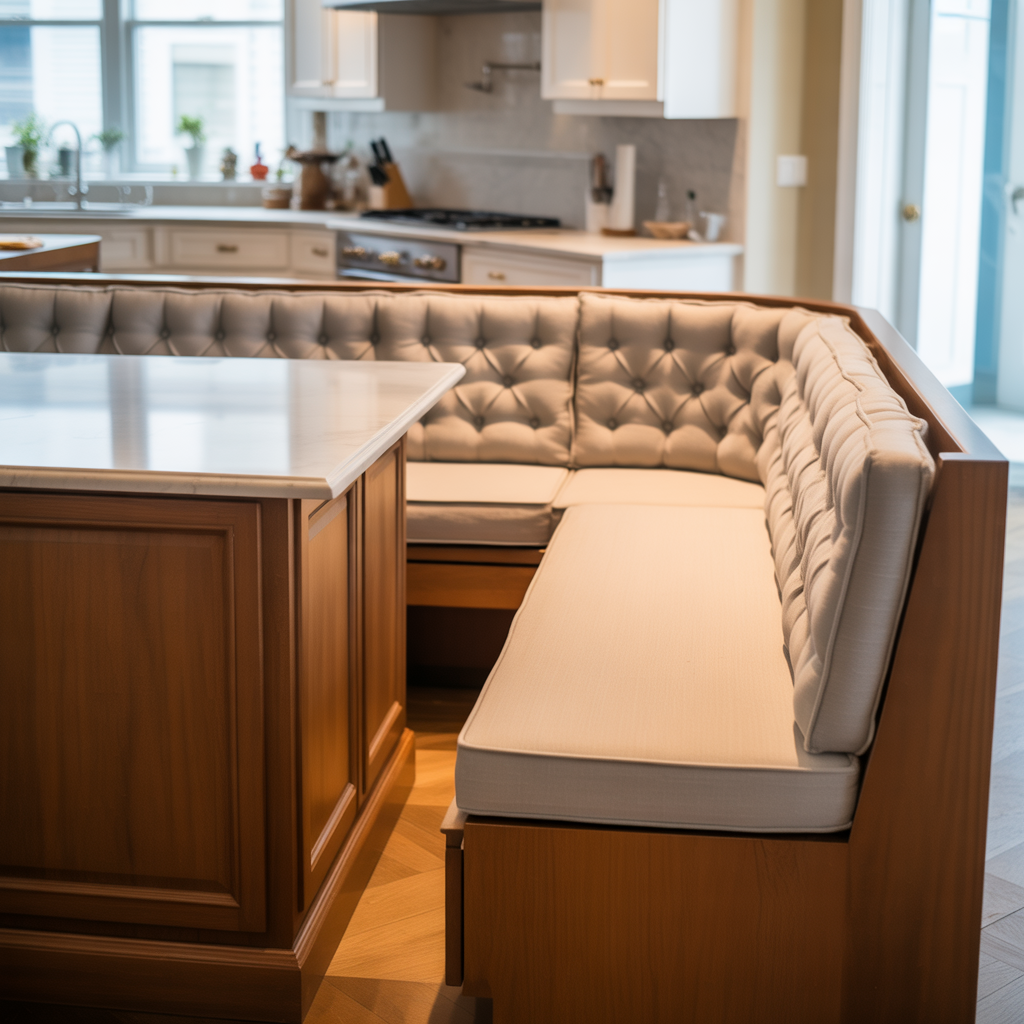
Deep button tufting elevates kitchen seating from functional to luxurious, introducing unexpected sophistication typically reserved for formal dining rooms. This detail transforms the island into a statement piece that blurs boundaries between kitchen and living spaces, challenging assumptions about where elegance belongs. The tactile richness of tufted fabric invites extended sitting, psychologically signaling that this space deserves the same comfort investment as primary living areas. It’s a bold declaration that everyday spaces merit extraordinary treatment.
Peninsula Banquette Kitchen Island for Small Spaces
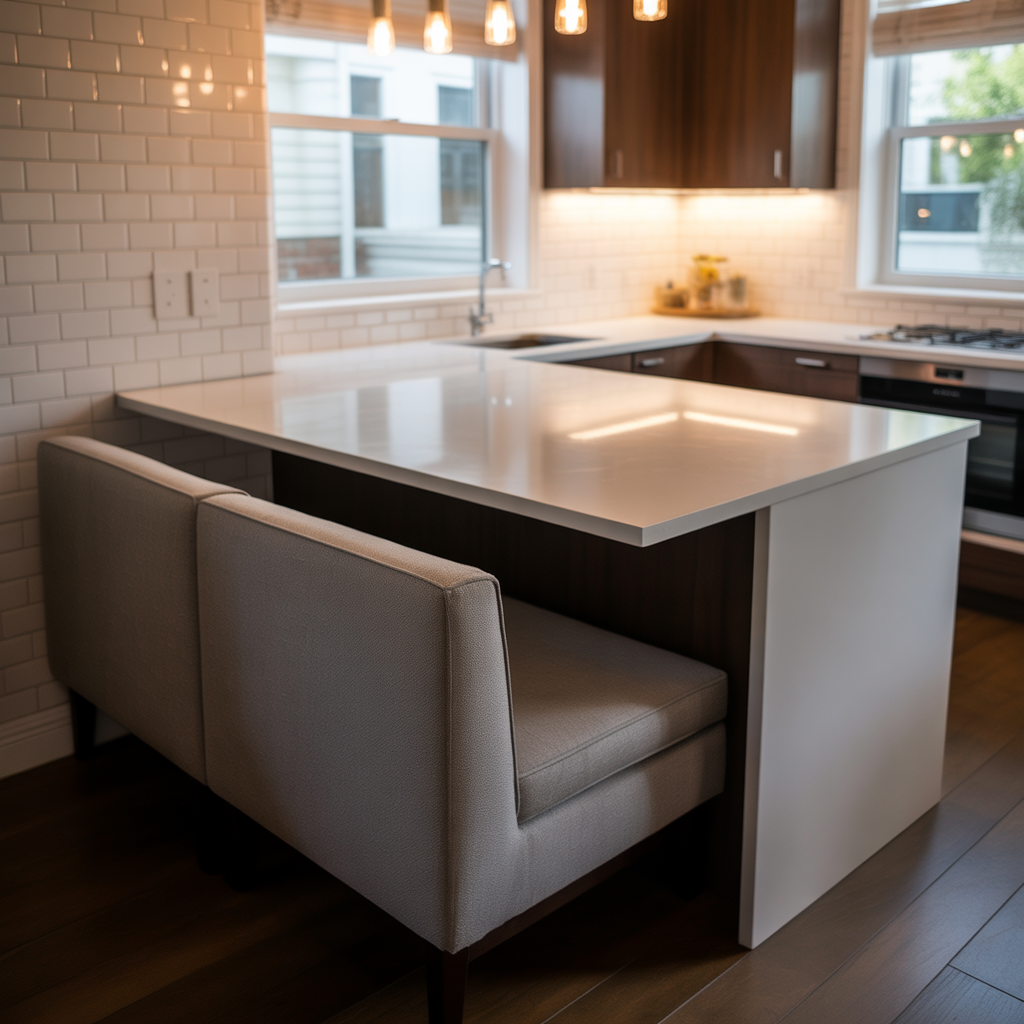
The peninsula configuration anchors to existing walls, maximizing seating and storage without consuming precious floor space in compact kitchens. This three-sided accessibility maintains open circulation while defining the kitchen boundary in studio apartments and small homes. The design cleverly exploits perimeter walls that often go underutilized, transforming them into functional assets. For urban dwellers navigating spatial constraints, the peninsula banquette represents intelligent compromise—delivering island benefits without requiring island square footage.
Transitional Banquette Kitchen Island with Mixed Materials

Transitional design’s genius lies in material diplomacy—pairing traditional wood cabinetry with contemporary stone surfaces, or classic profiles with modern hardware. This balanced approach creates timeless kitchens that resist stylistic dating, appealing to our desire for longevity in major investments. Mixed materials add visual interest while allowing personalization that reflects individual taste rather than trend allegiance. The banquette becomes a canvas for textural play where leather meets linen, wood greets stone, and classic proportions embrace current sensibilities.
Coastal Banquette Kitchen Island with Shiplap Details
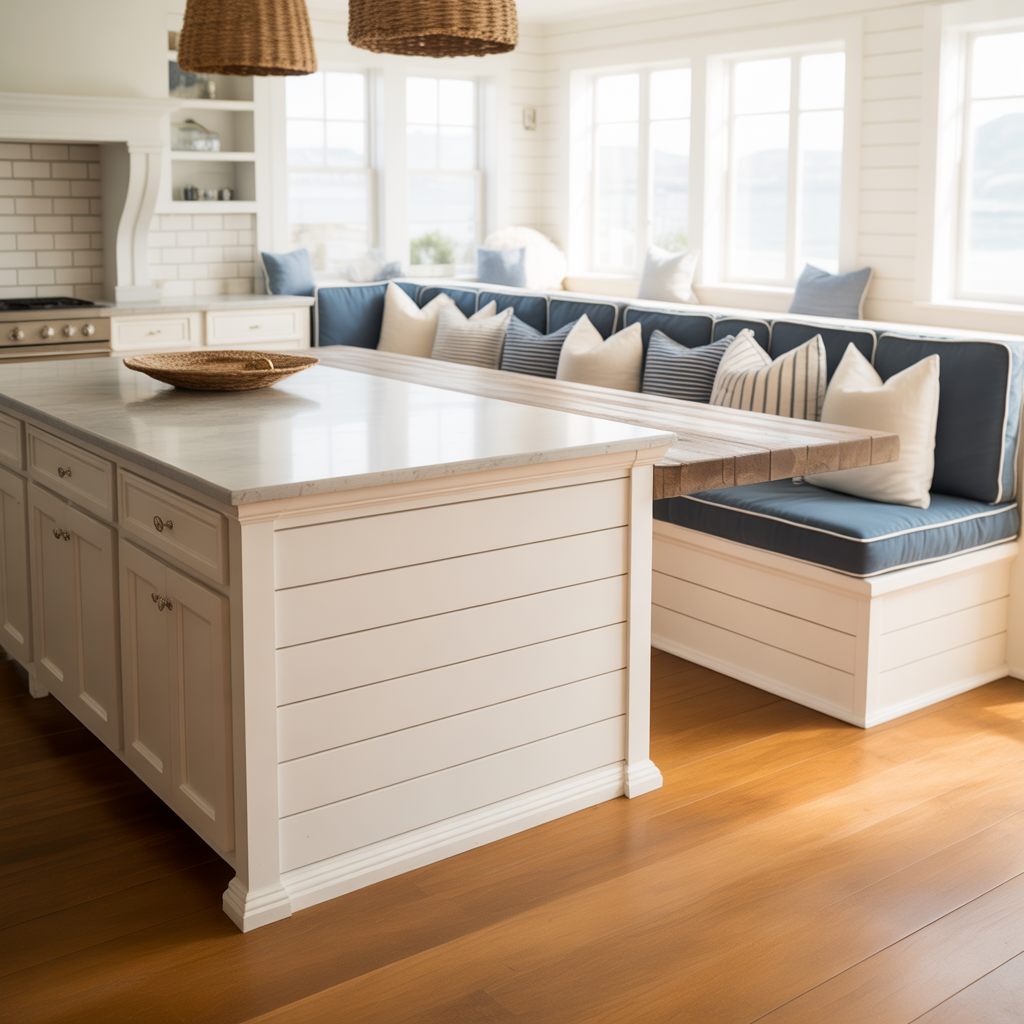
Horizontal shiplap cladding evokes seaside cottages and maritime architecture, introducing casual elegance that feels perpetually vacation-ready. The textured wood planking adds dimensional interest to island bases while reinforcing coastal themes through material authenticity. This design particularly resonates in beach homes and lake houses, where interior finishes should reference their natural surroundings. Paired with navy cushions or sandy neutrals, the shiplap banquette creates relaxed gathering spaces that psychologically transport inhabitants to waterfront retreats regardless of actual geography.
Contemporary Banquette Kitchen Island with Quartz Surfaces
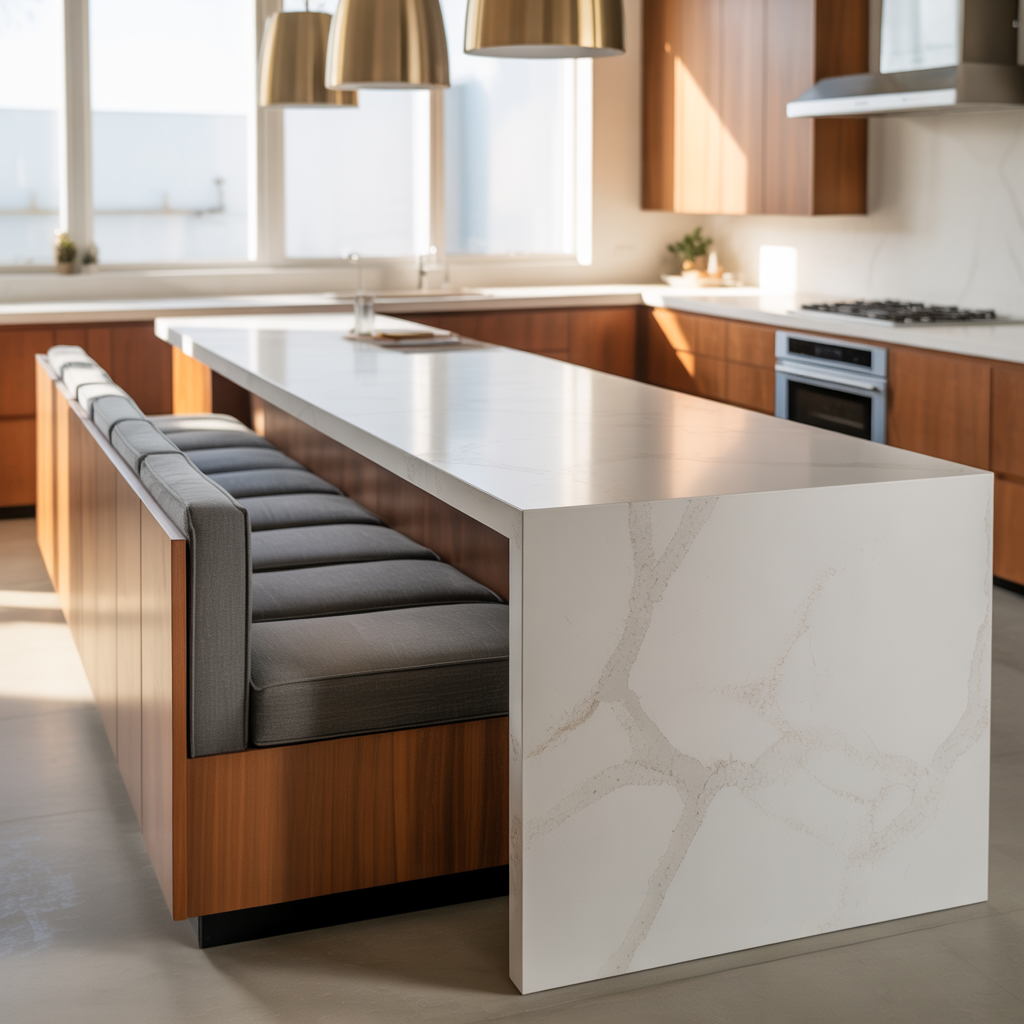
Engineered quartz delivers the luxurious appearance of natural stone with superior durability and maintenance ease—a practical indulgence for high-use kitchen islands. The material’s consistency and available colorways enable seamless integration with contemporary cabinetry, creating cohesive visual statements. Quartz surfaces reflect light beautifully, enhancing brightness in kitchens while resisting staining and etching from daily use. This marriage of beauty and performance exemplifies contemporary design’s emphasis on materials that work as hard as they look good.
Banquette Kitchen Island with Built-In Wine Storage
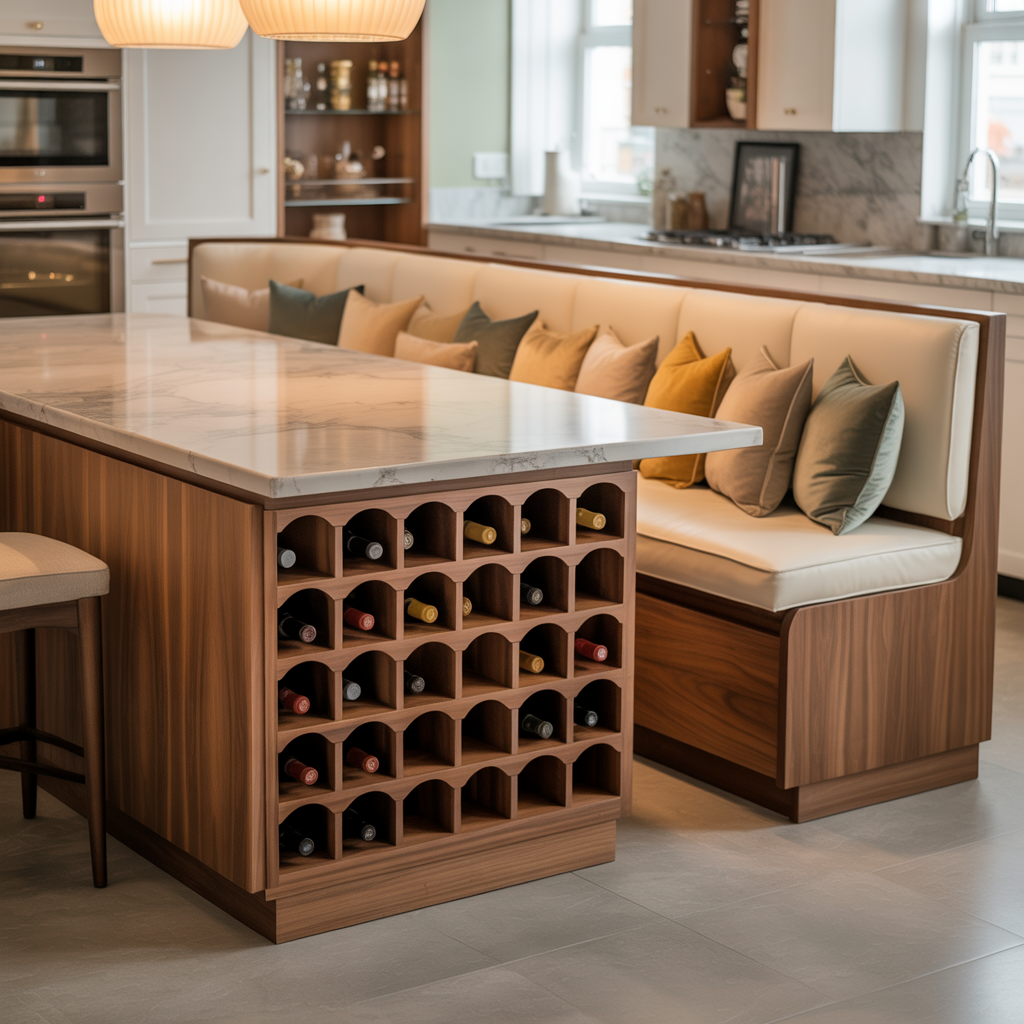
Integrated wine storage transforms the kitchen island into an entertaining hub, displaying bottles as decorative elements while keeping them accessible for impromptu gatherings. This feature elevates the island’s social function, subtly announcing the space’s readiness for conviviality. Whether through visible racks or climate-controlled compartments, wine storage adds sophistication and purpose beyond basic seating and dining. It’s a design detail that reflects lifestyle priorities, acknowledging that the modern kitchen serves as both workspace and social catalyst.
Multifunctional Banquette Kitchen Island with Homework Station
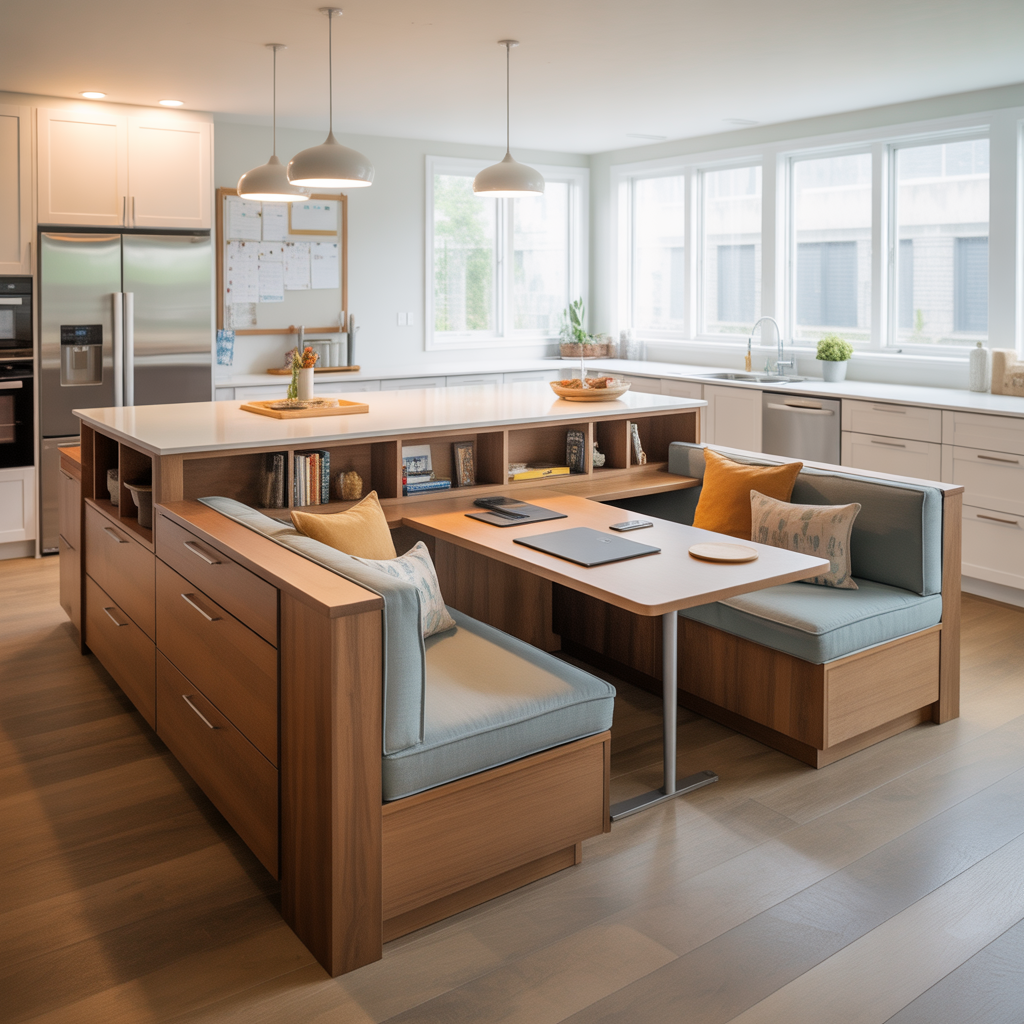
The homework station banquette acknowledges contemporary family realities where kitchens serve as command centers for domestic life beyond cooking. Integrated power outlets, task lighting, and organizational cubbies transform one end into a supervised study zone while maintaining dining functionality. This design supports what I call “parallel presence”—family members occupying the same space while engaged in different activities, maintaining connection without constant interaction. It’s spatial planning that understands modern parenting’s need for flexibility and proximity.
Luxe Banquette Kitchen Island with Velvet Cushions
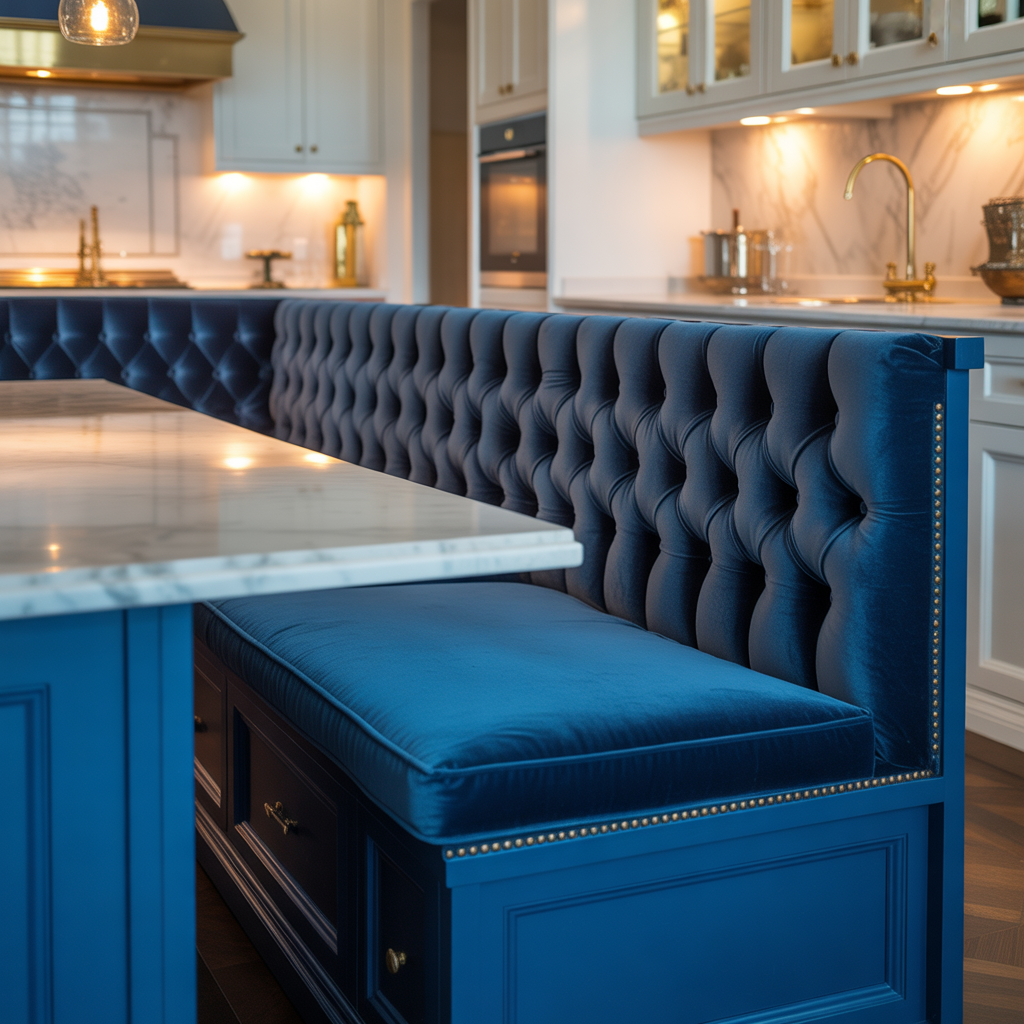
Sumptuous velvet upholstery makes an audacious statement that kitchens deserve the same luxury treatment as formal spaces, challenging conventional wisdom about appropriate materials. Rich jewel tones or sophisticated neutrals in performance velvet introduce tactile opulence while remaining surprisingly practical for daily use. This design choice reflects growing confidence in blurring room boundaries and elevating everyday spaces. The psychological impact is profound—plush seating signals that family meals merit the same ceremonial treatment once reserved for special occasions, celebrating the extraordinary within the ordinary.



